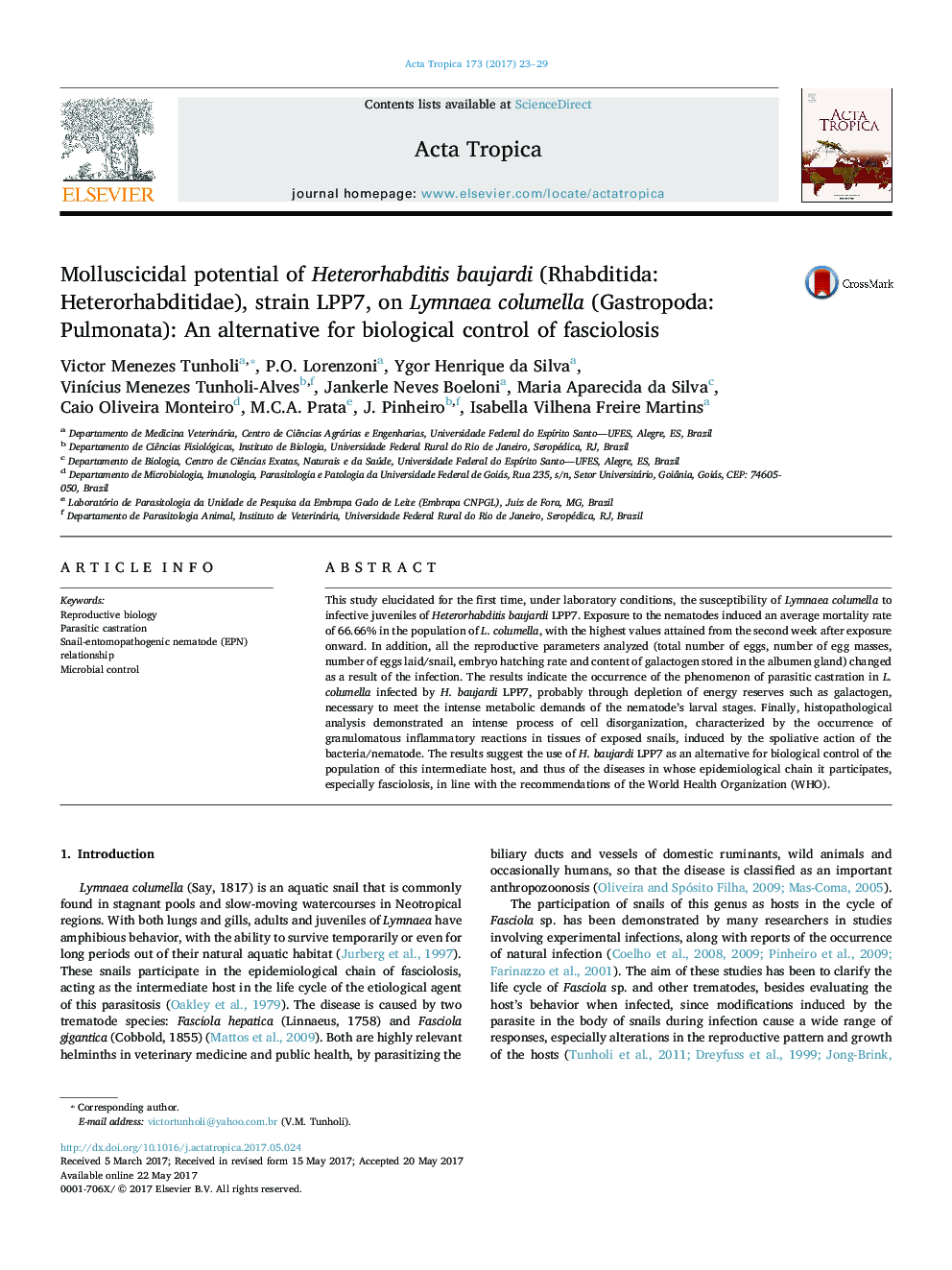| کد مقاله | کد نشریه | سال انتشار | مقاله انگلیسی | نسخه تمام متن |
|---|---|---|---|---|
| 5671075 | 1592751 | 2017 | 7 صفحه PDF | دانلود رایگان |

- H. baujardi LPP7 induce mortality in the population of L. columella studied.
- Exposure by H. baujardi LPP7 changes the levels of galactogen in L. columella.
- H. baujardi LPP7 induces parasitic castration in L. columella.
- H. baujardi LPP7 induces the formation of granulomatous reactions in tissues (digestive gland and cephalopodal mass) of the host.
This study elucidated for the first time, under laboratory conditions, the susceptibility of Lymnaea columella to infective juveniles of Heterorhabditis baujardi LPP7. Exposure to the nematodes induced an average mortality rate of 66.66% in the population of L. columella, with the highest values attained from the second week after exposure onward. In addition, all the reproductive parameters analyzed (total number of eggs, number of egg masses, number of eggs laid/snail, embryo hatching rate and content of galactogen stored in the albumen gland) changed as a result of the infection. The results indicate the occurrence of the phenomenon of parasitic castration in L. columella infected by H. baujardi LPP7, probably through depletion of energy reserves such as galactogen, necessary to meet the intense metabolic demands of the nematode's larval stages. Finally, histopathological analysis demonstrated an intense process of cell disorganization, characterized by the occurrence of granulomatous inflammatory reactions in tissues of exposed snails, induced by the spoliative action of the bacteria/nematode. The results suggest the use of H. baujardi LPP7 as an alternative for biological control of the population of this intermediate host, and thus of the diseases in whose epidemiological chain it participates, especially fasciolosis, in line with the recommendations of the World Health Organization (WHO).
Journal: Acta Tropica - Volume 173, September 2017, Pages 23-29